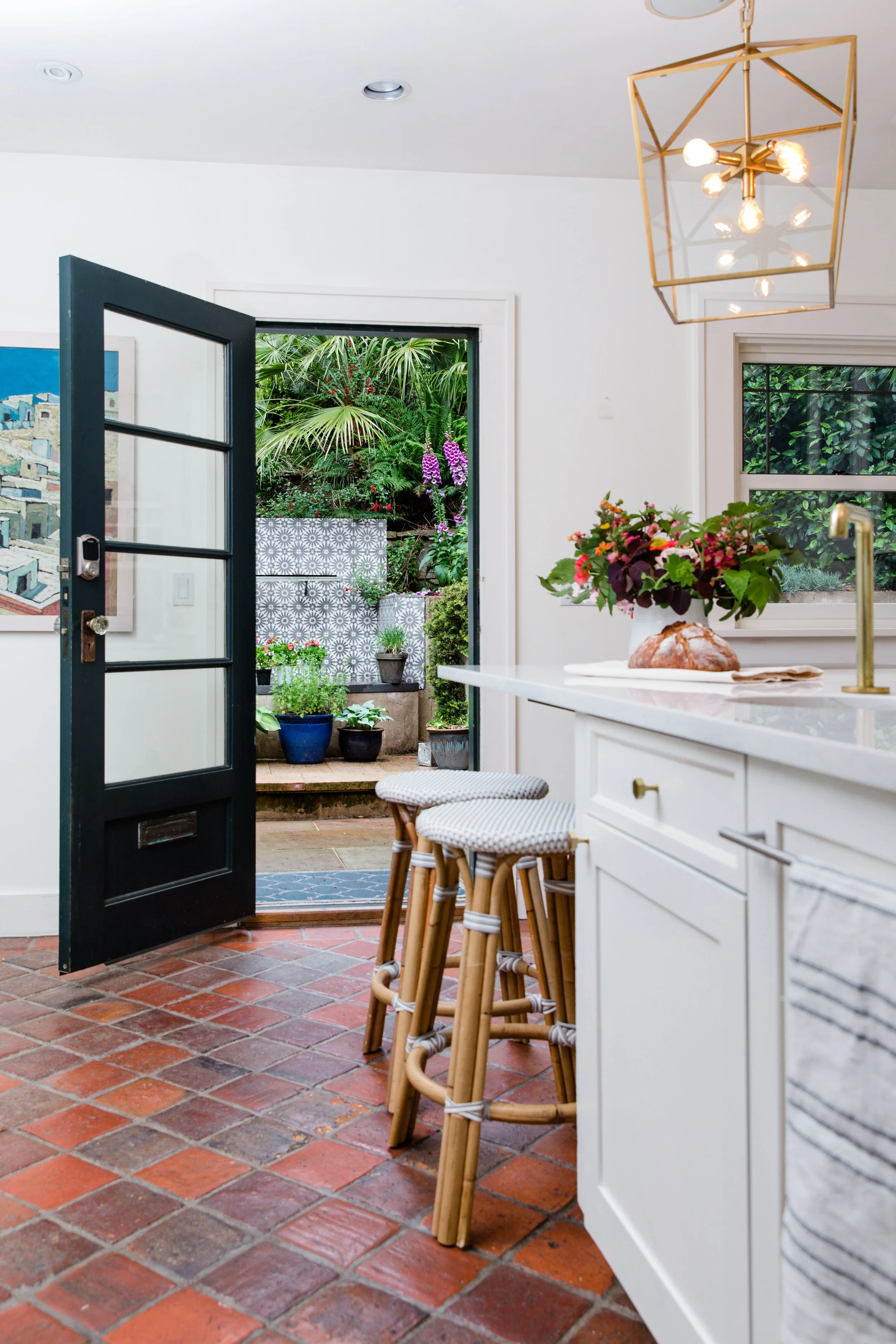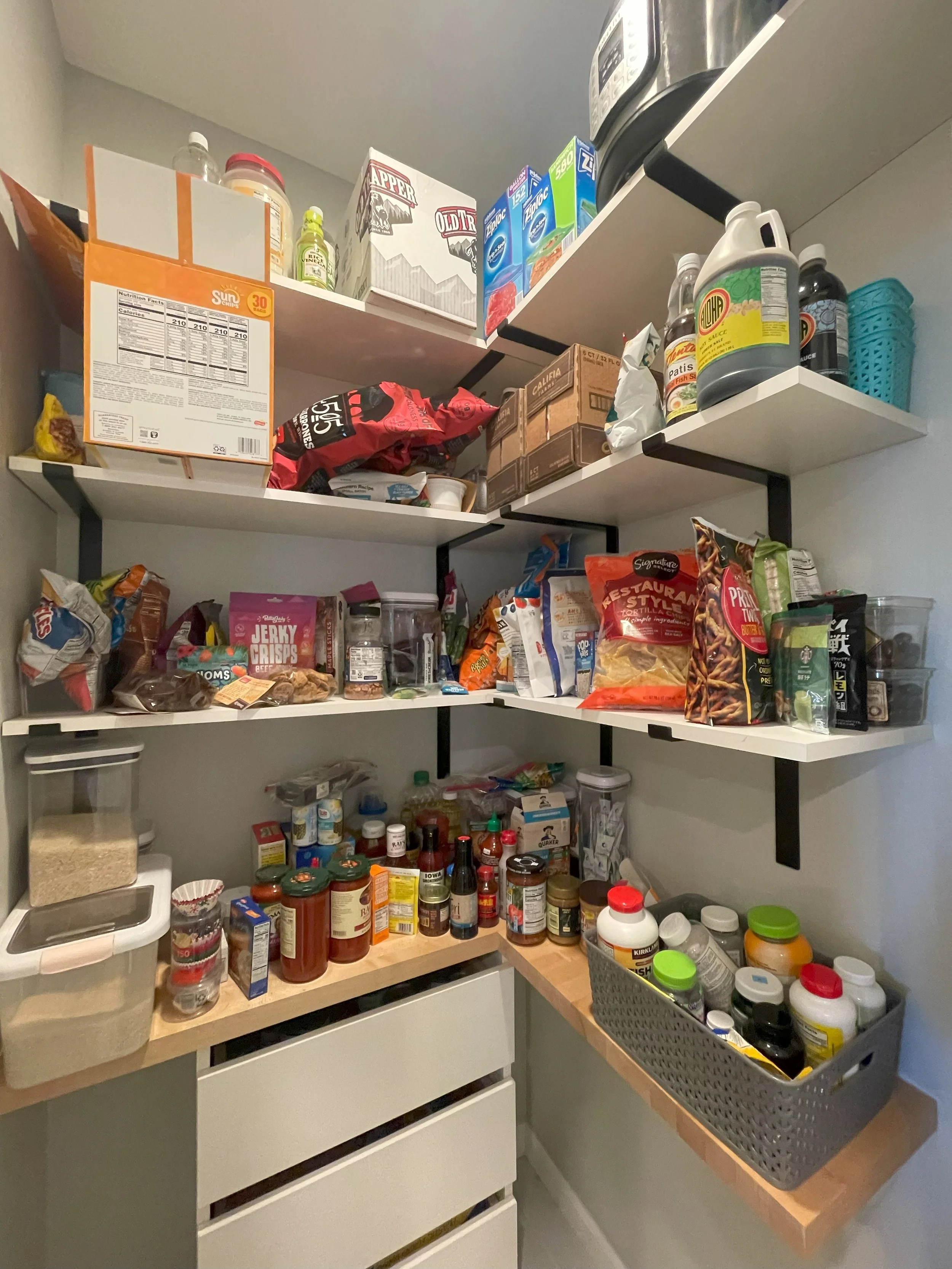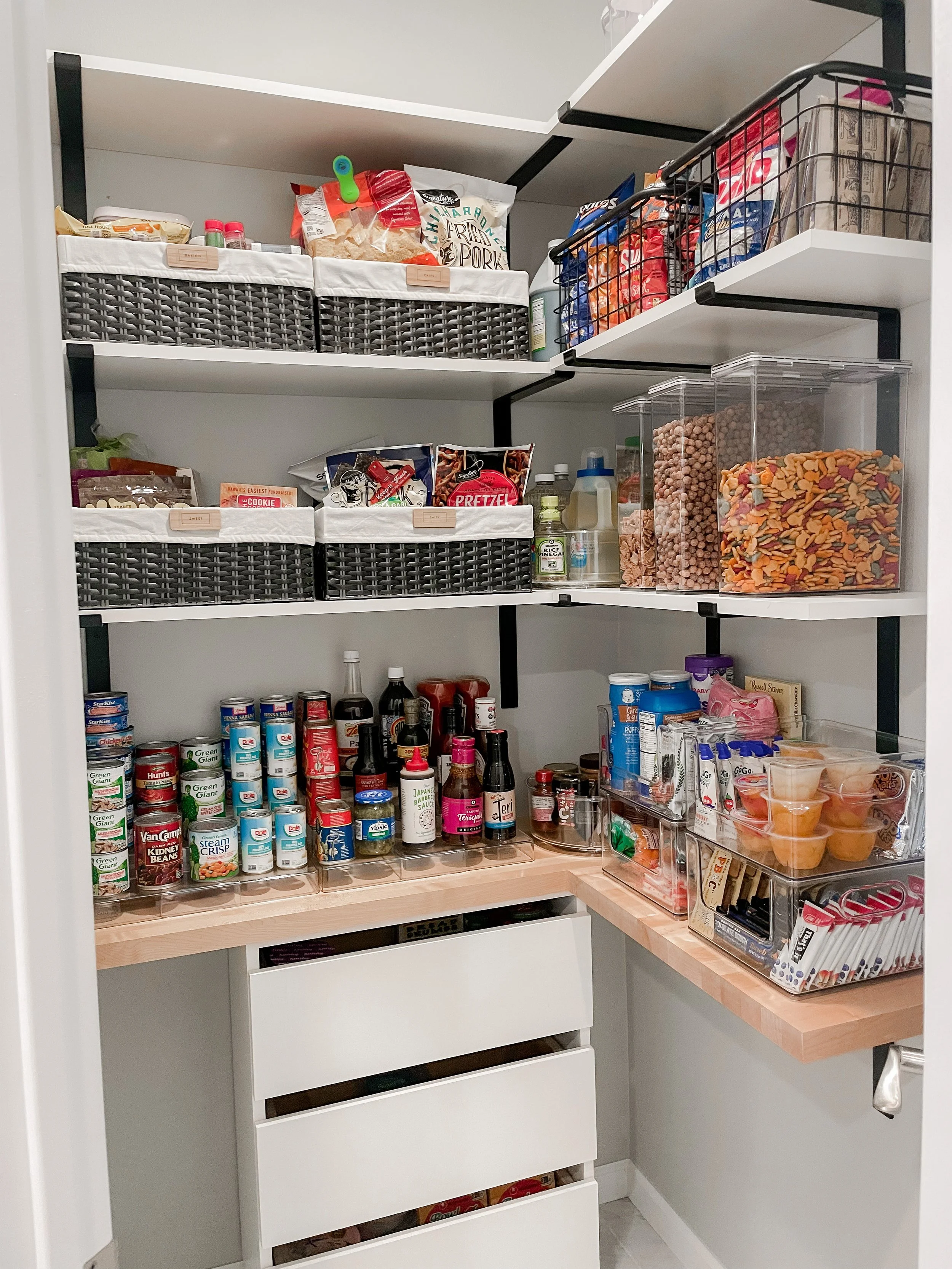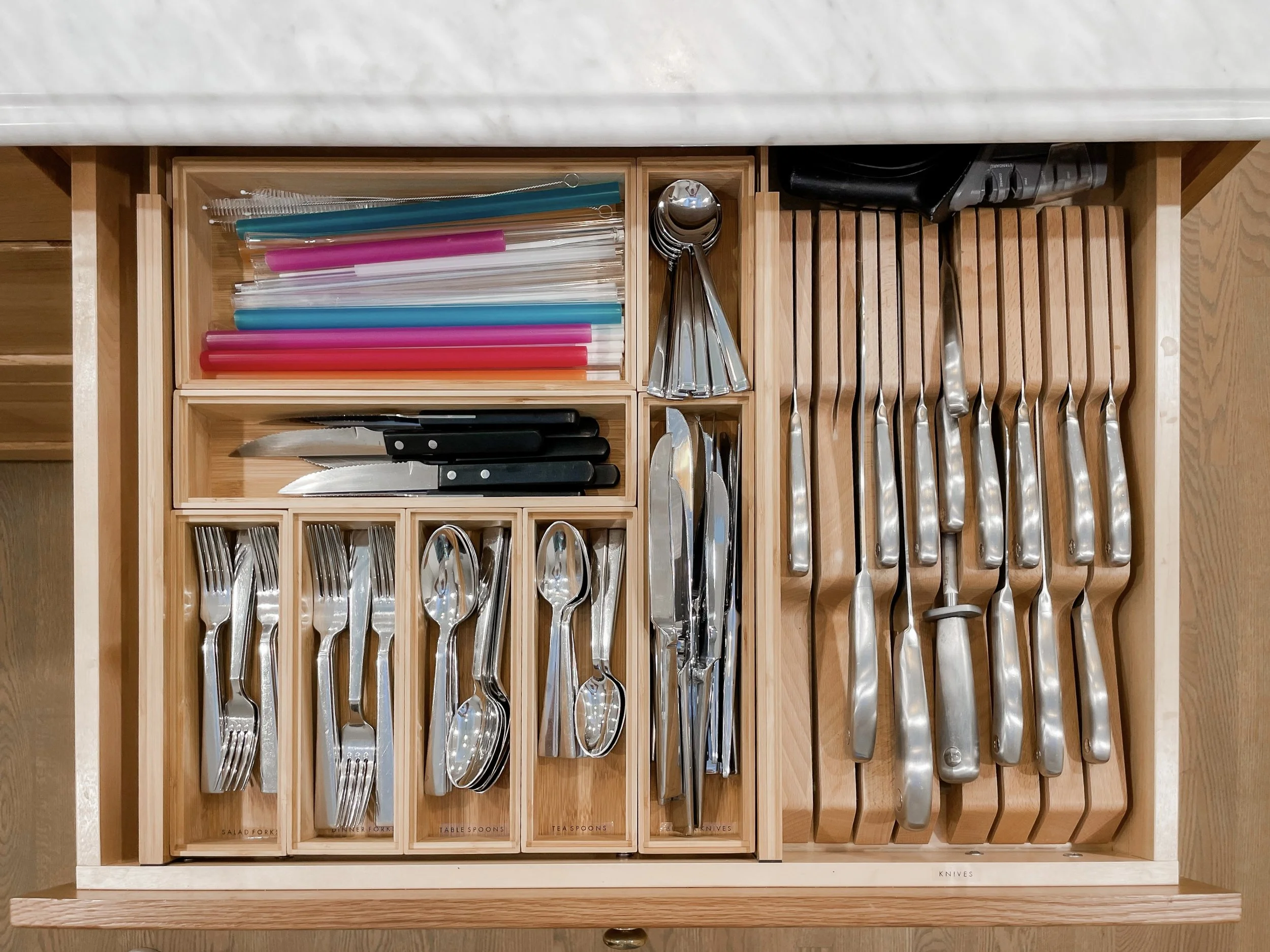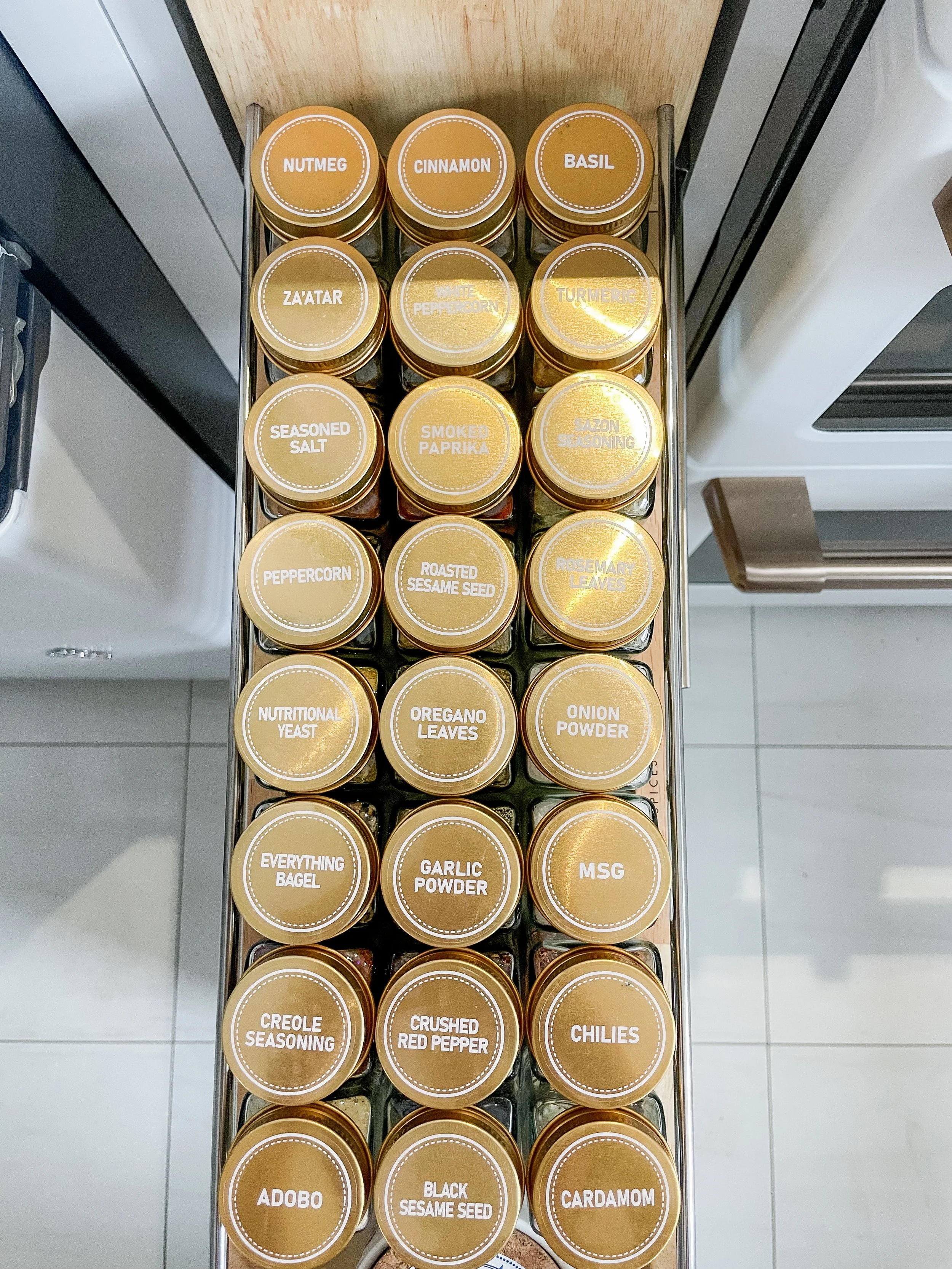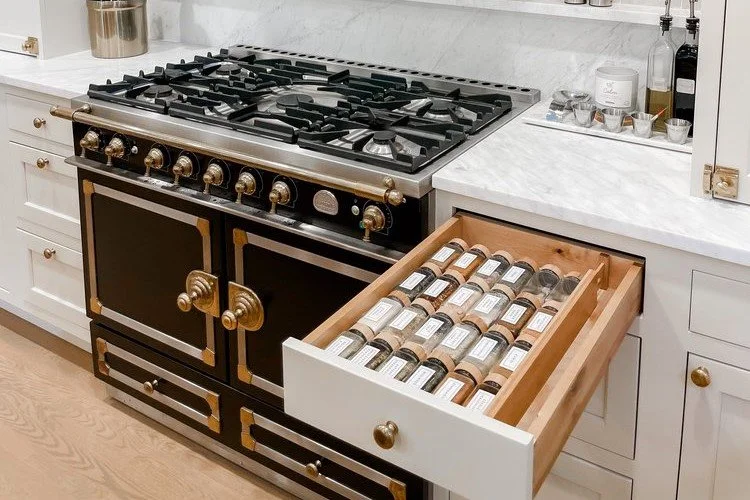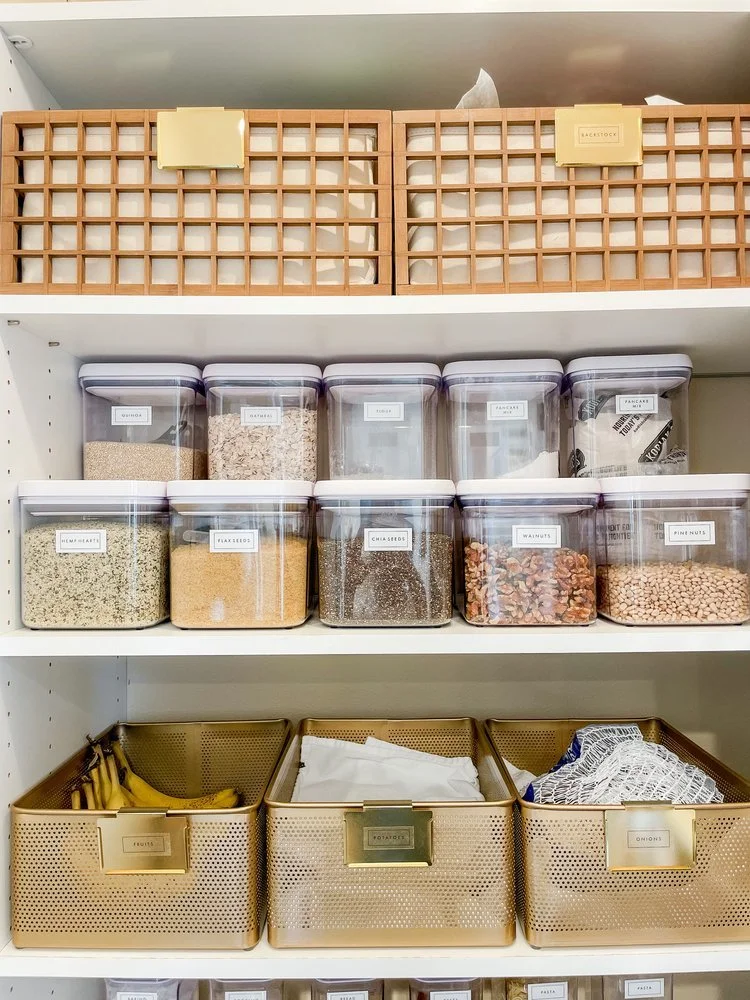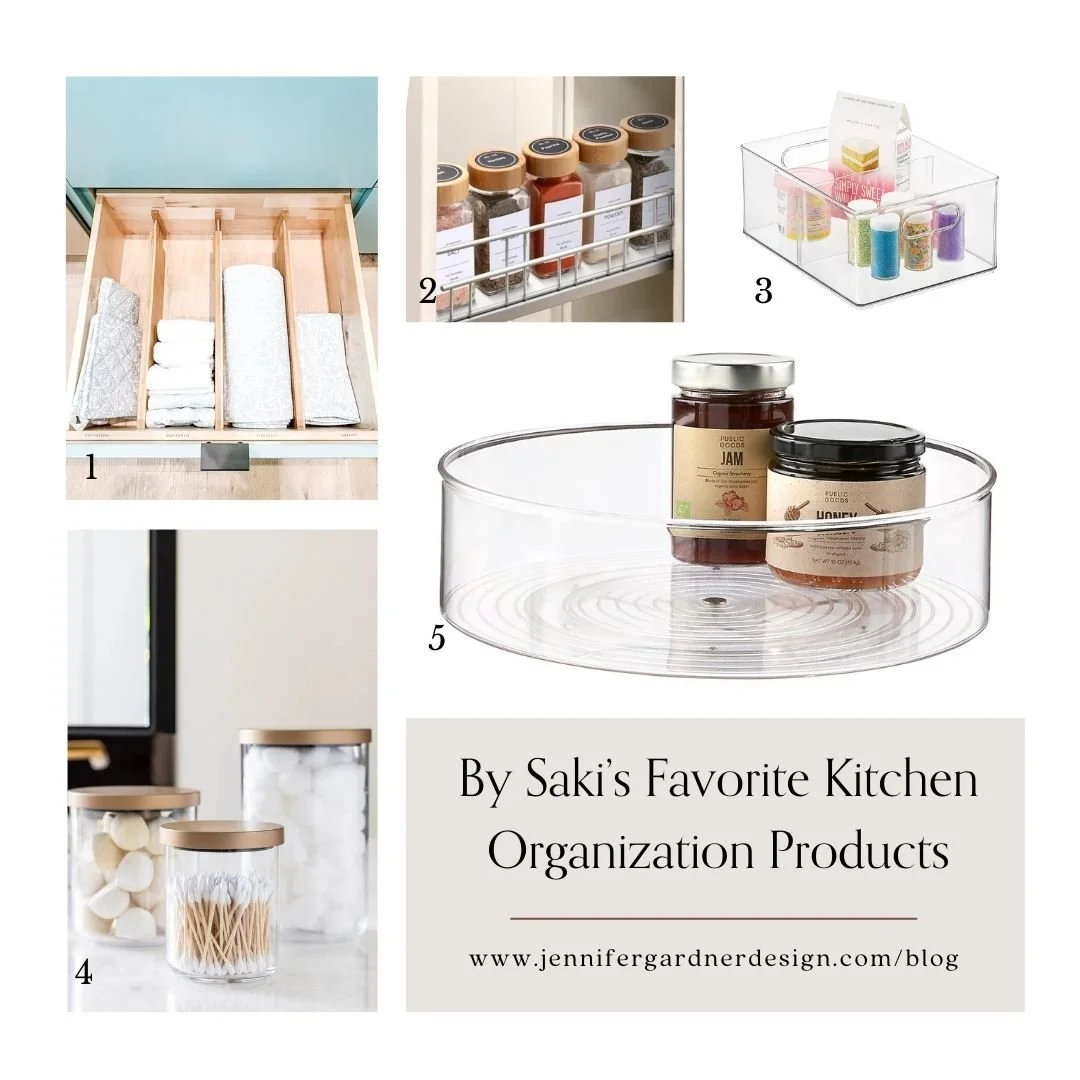Ask An Expert: The Kitchen Organization Edition
Have you ever looked around your kitchen and felt a wave of anxiety wash over you? The countertops are overrun with appliances, your drawers are overflowing, and you haven’t found the salt and pepper shakers in days. This is a very relatable and common scenario—you’re not alone!
When kitchen organization feels overwhelming, it’s time to bring in the experts! We had the pleasure of connecting with Seattle-based organizer Iris Miyasaki, the founder of By Saki, a business that provides wardrobe styling, interior styling, and interior organization. She took us into the world of organization and gave us her top tips for managing a kitchen organization project. Plus, she even shared her list of favorite kitchen organization items. Consider your spring cleaning mode activated!
This interview has been edited for length and clarity.
Photography by Emily Keeney
Meet Iris, our organization expert!
Sami: I always like to kick things off with a little introduction. What is your job title? How would you describe the work that you do?
Iris: By Saki is an intersection of home organizing and wardrobe styling. My job title is founder, decorator, stylist, organizer, content creator—I wear many hats! I got my start in New York where I was working in fashion. I loved fashion, but it was a grind and I knew I wanted to be closer to Hawaii, my home, and Seattle is the next best place. When I lived in New York, I was always in tiny spaces, which is how I really honed my skills in home organizing. Over time, I naturally grew my business from wardrobe styling to also include interior styling and organization as well.
The selection and decision-making process
Sami: What do you think is the first step for homeowners planning a kitchen organization project?
Iris: If they want to hire a team, the first step is to reach out to an organizer. I don’t say that in a sales-y way! I say that because I feel like oftentimes, when people are stuck, reaching out to professionals helps to take that pressure off. When people are pressured to begin a tidying project without an organizer's knowledge, they sometimes fall into the trap of buying random things. So that's why I say reach out to a professional first.
But if it's for someone who's doing a DIY project, this seems silly, but their first step is to eliminate all the expired food in their kitchen! More often than not, that's what's adding clutter to the space.
Sami: How can homeowners prepare for their meeting with you?
Iris: Start by identifying where the clutter is most overwhelming. It might be where the kiddos are, or if you don't have kids, it might be where your spices are. It's where your high touch points are and how you use the space. Note where it's getting sticky. Sometimes, clients don't know where that is until I start organizing. I also encourage clients not to tidy up before I come. I really want to see the space in its organic, unfiltered state.
Sami: What are some questions someone should ask before reorganizing their kitchen?
Iris: The first one is, what are my most used appliances? And the reason why that one's usually the first one is because appliances are so chunky and clunky, and a lot of them are hideous. A lot of clients want clear countertops, but you're going to have to compromise if there's that one thing that you need, like an air fryer.
The second question is to determine how you use your kitchen. How do you use it for meal prep? Are you really minimalist when you cook? Or, do you like to make elaborate meals? Do you use twenty spices when you cook? Are you meal-prepping for kids? Is it a place for gathering? Is it a place for cooking solely?
How you use your kitchen is the overarching question to consider because every house is different.
BEFORE & AFTER (by Saki)
Common challenges (and how to avoid them!)
Sami: What do you wish that more homeowners knew about the kitchen organization process?
Iris: I would love for them to know that it is very natural and normal to feel overwhelmed, not just in the kitchen but when organizing any space in general. And that's where my expertise comes in because I love a mess! I think people feel a lot of pressure, especially with their busy day-to-day, and they chip away at mess slowly rather than doing it all at once. That's where things go awry.
A lot of my clients always say, " Oh, I must be so messy compared to everyone else.” But actually, I think everyone has their strengths and their lane, and it’s okay not to be tidy. That’s why I'm here! I think it's good for people to go into this process not judging themselves.
Sami: What are the most challenging parts of the kitchen organization process?
Iris: For me, it's finding the optimal locations for categories. So when I'm sorting, I create different categories for spices, appliances, utensils, cooking utensils, prep tools, and all of those things. People like to jumble everything together sometimes, especially in the drawers, so sorting that out is the first step.
I love working in old Seattle homes—they’re so cute! But they definitely have some awkward storage solutions. Luckily, coming from New York and growing up in apartments, I like figuring out the puzzle pieces and challenges that come with unique spaces.
Sami: What are other common inconveniences and stumbling blocks that homeowners should be prepared for during this process? And—how can they avoid them in the first place?
Iris: Storage is definitely one of them, and organizing. For organizing, it's the pressure of not making yourself feel overwhelmed by the whole process, but also being aware of your needs. I think people see something on Instagram and want that particular aesthetic. But it needs to fit their lifestyle, or else it won’t work. I think people run into stumbling blocks when figuring out what they think they want versus what they actually want. I’m the middleman who helps them figure out what makes sense based on lifestyle, how the kitchen is used, but also aesthetically how the client wants the kitchen to look.
UTENSIL ORGANIZATION (by Saki)
Rising design trends and inspiration & tips for success
Sami: What are the measures of success during a kitchen organization project?
Iris: For me, it's the balance of functionality and beauty or aesthetic. I really want the space to feel calming. I don't want to add clutter, pressure, or visual chaos to my client's lives.
Sami: Are there any trends that you’ve been noticing lately?
Iris: Let me tell you, everyone wants me to put their spice bottles in matching spice jars with pretty labels, which I love doing. I would say there are some trends, I wouldn't say bad trends, but things that people could avoid, like purchasing the Costco variety pack of storage bins.
I know it's a deal, but they come in a variety of sizes. And usually, you know, when you hire an organizer, they will take measurements and will bring bins specifically for your space. More often than not, you probably need ten of one size bin versus ten of all different sizes, right?
I would love people to stop buying unnecessary bins because it's wasteful. You end up using half the bins, and the other half are shoved away in the back of the cabinet.
Back to the spices, I've seen many clients do smart storage with their spices. One nice trend is creating a spice drawer right next to the stove for easy access.
SPICE ORGANIZATION (by Saki)
Sami: What are some tips for choosing the right solution for a space?
Iris: The solution is really connected to the kind of product I bring in. I don’t just buy the same product and use it on all the homes.
For example, if the client's home aesthetic is a little warmer and a little more woodsy or a little more organic, I'll stick with bamboo products and natural products and materials. If a home is a little more modern, I'll stick to more acrylic items and minimalist solutions. It’s really all about that balance between functionality and aesthetics.
Sami: Can you tell us about a recent project that inspired you or you’re excited about?
Iris: A few months ago, I did a home for a couple who was expecting their second child. I prepped the kitchen for the new baby with all the baby bottles, and we created a station for the older sister so she could start setting the table herself. I thought that was just the cutest thing ever!
I love this type of project because that's a case where people might not realize how valuable it would be to hire an organizer. And they're so busy, like prepping for a baby, that they probably don't think of it. And then, you know, the baby comes, and then the kitchen's a mess because there are bottles everywhere and so on and so forth! So, even if you're not a parent, there are other chaotic life things happening that I can work around and make easier.
Sami: I just love the idea that sometimes you bring in an organizer, not necessarily because your space is totally in disarray yet, but almost like a prep tool to prepare for a new chapter.
The next question is, when is the best time of year to plan a kitchen organization project?
Iris: I honestly can say that any time of the year is a good time. It's really lined up with your mental capacity and your schedule. If you have kiddos, I would say before the school year kicks off—the calm before the storm! For other people without kids, I’d say any time of the year. People do seem to be more pumped up about it in the spring.
Sami: When we talk about the time length of these projects, how long does it take to organize your kitchen?
Iris: It depends on the size of the kitchen. Kitchens usually take between six to fifteen hours. I would say to book me right now, we're looking about three weeks out, but once my team and I get in there, we want to reach completion as soon as possible. When you have a lot of clutter, you're like, I just want this removed ASAP!
One thing I will add, though, is that while I do want to provide a wow factor, I also want the client to be in the conversation. We're just not going to do a big reveal, and the client has had no input on where we put anything. There is a lot of conversation that goes into the process with the client while still keeping them hands-off enough so that this does feel like a true luxury service.
PANTRY ORGANIZATION (by Saki)
Budgets, costs, and more, oh my!
Sami: Breaking down the budget: What are the typical low, medium, and high budget ranges a homeowner could expect for their kitchen organization project?
Iris: On the low end, it could cost around the 400 range. And then, on the high end, closer to 1500 to 2000. If you just want to do it yourself, get the right product. For clients who are mindful of their budget, the advice I would give is don't cheap out and buy things that don't make sense or don't fit in your space.
Sami: Do you have any tips for homeowners on a budget?
Iris: Yes, IKEA and Target are the best spots for you. But before you go there and start shopping, you need to measure your space and make sure that everything you buy has value. You really want to maximize the depth and width of your shelves and drawers. You don’t want to just have random sizing and have to shove containers into spaces.
If you’re ready to shop, here are some of my favorite organization items for the kitchen.
Drawer Dividers: Don't forget to measure the depth of your drawers so you get the right one!
2. Matching Spice Jars: This is helpful and aesthetically pleasing in your space.
3. All-Purpose Bin with Divider: These are great for the pantry. The clear/acrylic bins can help you keep an inventory of what you have.
4. Matching Canisters: These canisters are pretty and functional—plus, they’re not made of glass, so you don’t have to be too precious with them.
5. Turntable: This can contain bottles of oil and vinegar, sauces, and spreads while keeping all options accessible.
I want to give a BIG THANKS to Iris for sharing her expertise and experiences with us! Visit By Saki if you’re ready to begin a conversation with an organization expert.
Want to learn more? Sign up for our weekly newsletter here to receive renovation tips, inspiration, and more.
